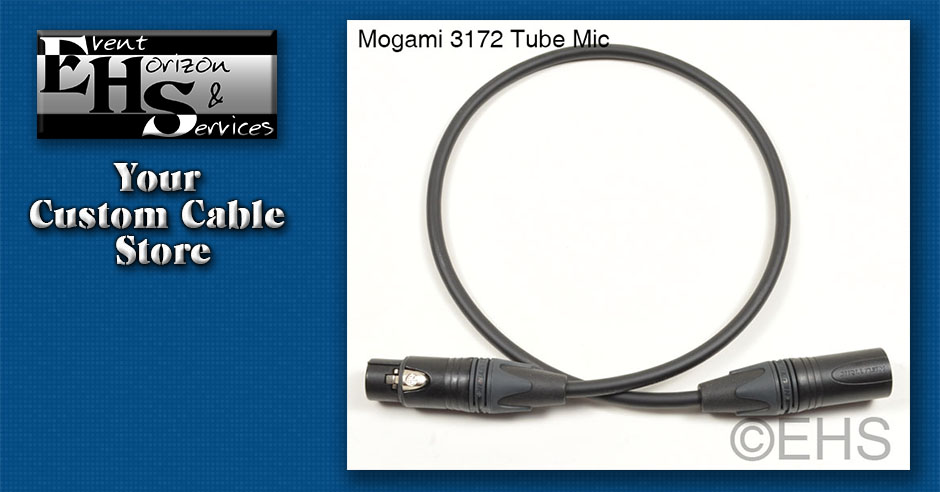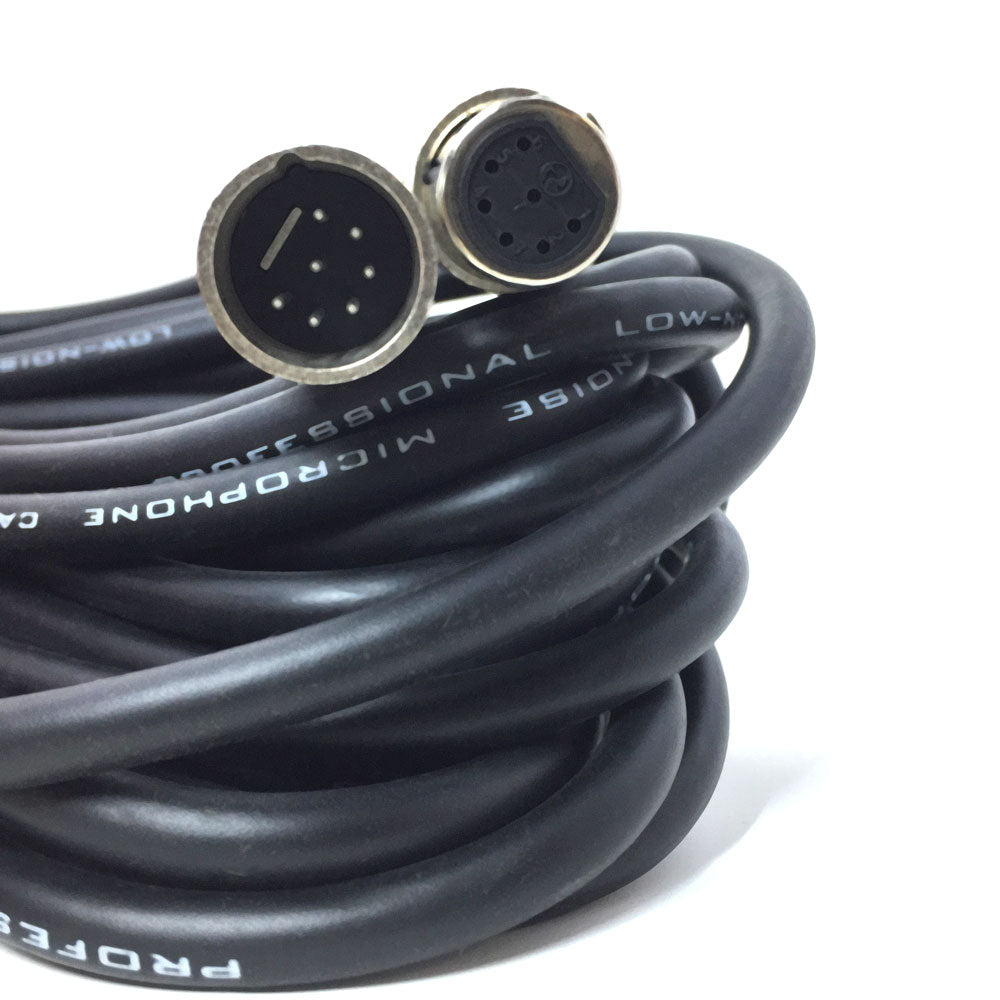SuicideSquid
Addicted to Fun and Learning
- Joined
- Jan 20, 2022
- Messages
- 702
- Likes
- 1,656
I'm currently working on a couple of microphone mod projects involving a 47-style large diaphragm tube mic, and a C12-style large diaphragm tube mic.
For those not super familiar with microphone tech, tube microphones house the tube in the microphone body. The standard 3-pin XLR cable is connected from the microphone preamp to microphone power supply, and then a seven-pin cable, consisting of the 3-pin signal/ground/shield connections of a standard XLR cable, plus low-and high- voltage power connections and grounds, are run from the power supply, through a cable typically ten feet in length to the tube mic. The low-voltage power connection typically carries around 150mA of current at 6-12volts, and the high-voltage connection flips that, carrying just a couple of mA at 120-200 volts.
I am broadly skeptical of claims that cables make a difference - I use standard XLRs in my recording setup, and I've never paid more than about $25 for a cable for my home theatre or headphone setups either. However, I've read from a couple of otherwise-reliable sources that the quality of the 7-pin XLR cable can make a meaningful difference in the microphone's output - that poor-quality cables such as those included with budget tube mics like the Apex 460 can cause a sag in the voltage to the heater (the low-voltage, "high" amperage line) which will alter the performance of the tube (presumably due to poor soldering on the connections and improper impedance or high resistance on the cable itself?).
This seems plausible to me, but as most of us know from the home theatre world, there's a massive difference between a plausible theoretical difference and measurable real-world difference.
Does anyone know of any objective testing showing a measurable difference between a cheap 7-pin cable and a "high-end" 7-pin cable? The "high-end" ones are typically in the $50-$100 range so we're not talking about a crazy amount of money here but I'd still rather not throw my money away on something that's just pseudoscientific nonsense.
Here's Microphone Parts's blurb on their Gotham cable. https://microphone-parts.com/products/gotham-gac7-neutrik-xlr7-tube-microphone-cable - Matt McGlynn, who runs mic parts, is a straight shooter and a good engineer, and his mic kits are great so I'm inclined to take his word on this, but the reference to "burn-in" is a big red flag for me, so I don't know what to think.
For those not super familiar with microphone tech, tube microphones house the tube in the microphone body. The standard 3-pin XLR cable is connected from the microphone preamp to microphone power supply, and then a seven-pin cable, consisting of the 3-pin signal/ground/shield connections of a standard XLR cable, plus low-and high- voltage power connections and grounds, are run from the power supply, through a cable typically ten feet in length to the tube mic. The low-voltage power connection typically carries around 150mA of current at 6-12volts, and the high-voltage connection flips that, carrying just a couple of mA at 120-200 volts.
I am broadly skeptical of claims that cables make a difference - I use standard XLRs in my recording setup, and I've never paid more than about $25 for a cable for my home theatre or headphone setups either. However, I've read from a couple of otherwise-reliable sources that the quality of the 7-pin XLR cable can make a meaningful difference in the microphone's output - that poor-quality cables such as those included with budget tube mics like the Apex 460 can cause a sag in the voltage to the heater (the low-voltage, "high" amperage line) which will alter the performance of the tube (presumably due to poor soldering on the connections and improper impedance or high resistance on the cable itself?).
This seems plausible to me, but as most of us know from the home theatre world, there's a massive difference between a plausible theoretical difference and measurable real-world difference.
Does anyone know of any objective testing showing a measurable difference between a cheap 7-pin cable and a "high-end" 7-pin cable? The "high-end" ones are typically in the $50-$100 range so we're not talking about a crazy amount of money here but I'd still rather not throw my money away on something that's just pseudoscientific nonsense.
Here's Microphone Parts's blurb on their Gotham cable. https://microphone-parts.com/products/gotham-gac7-neutrik-xlr7-tube-microphone-cable - Matt McGlynn, who runs mic parts, is a straight shooter and a good engineer, and his mic kits are great so I'm inclined to take his word on this, but the reference to "burn-in" is a big red flag for me, so I don't know what to think.


